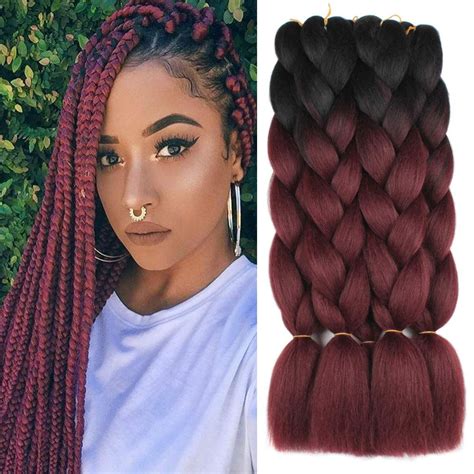Synthetic hair extensions offer a wide range of benefits, from versatility and affordability to ease of use. Here’s a guide to the different types of synthetic hair extensions and how to choose the right ones for your needs.

- Made from a synthetic fiber that resembles human hair
- Available in a wide range of colors and textures, including heat-resistant options
- Versatile and can be styled using heat tools
- Affordable and relatively easy to apply
- Made from a high-quality synthetic fiber that is softer and more durable than Kanekalon
- Has a natural shine and feel
- Heat-resistant and can be styled using heat tools
- Available in a variety of colors and textures
- Can be more expensive than Kanekalon extensions
- Made from a synthetic fiber that is flame-resistant and resistant to fading
- Has a natural look and feel
- Heat-resistant and can be styled using heat tools
- Can be more difficult to apply than other types of synthetic hair extensions
- Made from a synthetic fiber that is similar to Kanekalon but has a more matte finish
- Available in a variety of colors and textures
- Heat-resistant but should not be styled using high heat
- Affordable and easy to apply
- Made from a synthetic fiber that is strong and durable
- Has a natural shine and feel
- Heat-resistant but should not be styled using high heat
- Available in a variety of colors and textures
- Can be more expensive than other types of synthetic hair extensions
The type of synthetic hair extensions you choose will depend on your individual needs and preferences. Consider the following factors:
- Texture: Synthetic hair extensions come in a variety of textures, from smooth and silky to coarse and curly. Choose a texture that matches your natural hair or the desired style you want to achieve.
- Color: Synthetic hair extensions are available in a wide range of colors, from natural shades to bright and vibrant hues. Choose a color that matches your natural hair or the desired look you want to achieve.
- Length: Synthetic hair extensions come in a variety of lengths, from short to long. Choose a length that is appropriate for the desired style you want to achieve.
- Price: Synthetic hair extensions vary in price, depending on the type of fiber, length, and quality. Set a budget before you start shopping for extensions.
Once you’ve chosen the right type of synthetic hair extensions for your needs, it’s time to apply them. Here are a few tips:
- Start with clean hair. Wash and dry your hair before applying extensions to ensure the extensions adhere properly.
- Section your hair. Divide your hair into small sections to make it easier to apply the extensions.
- Use a heat tool. Heat the adhesive on the extensions with a heat tool such as a hair dryer or curling iron.
- Apply the extensions. Apply the extensions to the desired area of your hair and press them down firmly.
- Seal the extensions. Use a hair straightener or curling iron to seal the extensions in place.
Synthetic hair extensions require special care to keep them looking their best. Here are a few tips:
- Wash your extensions regularly. Wash your extensions with a mild shampoo and conditioner every 2-3 weeks.
- Avoid using harsh products. Do not use harsh products such as bleach or color-safe shampoos on your extensions.
- Use a heat protectant. Use a heat protectant spray before using heat tools on your extensions.
- Store your extensions properly. When not in use, store your extensions in a cool, dry place.
Synthetic hair extensions offer a versatile and affordable way to add length, volume, and color to your hair. By following these tips, you can choose the right extensions for your needs and keep them looking their best for months to come.
